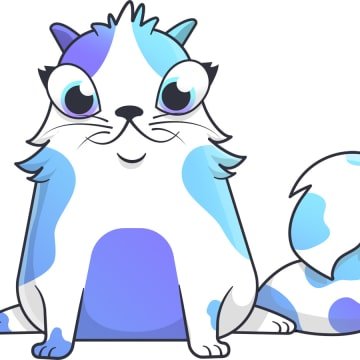Why crypto collectors are spending thousands on cartoon cats
From: CNN
Updated 5th March 2018

Written by Matt Linares, CNN
Until recently, the most expensive cat on record, costing $41,435, was believed to be a Bengal called Cato. That was before the appearance of CryptoKitties, a species of blockchain-based digital cat that you can now buy and trade with cryptocurrency.
How Bitcoin is making waves in the luxury market
Every CryptoKitty is unique and stored digitally on the Ethereum blockchain, a popular alternative to bitcoin. The first CryptoKitty was only born a few months ago and the market has ballooned since. The most expensive one to date was sold for the equivalent of $110,707 in December 2017.
It might seem a strange way to spend a small fortune, but no more so, it could be argued, than splashing out on real-world collectibles. (A Pokémon card, for example, sold for almost $55,000 in 2016.)
In the same way collectors pay huge amounts for rare toys or comic book merchandise -- or even works of fine art -- CryptoKitties show how digital scarcity can make cult objects valuable: if the blockchain (a sort of digital ledger) tells you that there's only one of those digital cats in the world, you might be willing to pay anything for it. Much more, in fact, than an exotic cat with physical fur.
The wild world of internet money is one of technology's new frontiers. Bitcoin and other cryptocurrencies have recently exploded, with 2017 seeing an extraordinary jump in price and popularity. And while no one really knows what's next for this fascinating technology, it has sparked the imagination of visionaries from every field.
The art of the future?
At "New World Order," a touring exhibition led by Furtherfield, a London artist community, visitors can see a Plantoid, a three-foot metal artwork in the shape of a flower with a multicolored bulb glowing at its core.
Currently on view in Rijeka, Croatia, the Plantoid is a self-owned art piece, managed by a "smart contract," a program running on the blockchain. It has its own cryptocurrency to spend and a set of instructions about how to spend it.
In the Plantoid's case, the instructions say: "Use any money that you get to hire artists who can build new Plantoids." In this way, the Plantoid reproduces, just like a real plant. You can give the Plantoid some bitcoins and, when there are enough funds in its wallet, it will advertise for artists to make another Plantoid. As a funder, you then get to vote on which artist's design is the best.
The Plantoid then transfers the bitcoins to the chosen artist, who takes responsibility for building the next version. It also sends a small fee to the artist who initially created it, as an incentive for artists to build the most beautiful Plantoids. The next Plantoid then begins the process again.
The Plantoid would just be a shiny curiosity if it were not intimately connected with the smart contract which, once active on the blockchain, runs independently of a human owner. It needs money from its funders, like most artists, but otherwise it has a life of its own. The Plantoid demonstrates new forms of digital autonomy, value and evolution which have now become possible.
How technology is changing the art world
"Blockchains have the potential to enable and stimulate new forms of social organization, resource distribution and collaboration in the arts," said Ruth Catlow, one of Furtherfield's founders.
"We'd like to see more variety in the imaginaries that underpin blockchains and the backgrounds of the people involved because technologies develop to reflect the values, outlooks and interests of those that build them."
We are just starting to discover new forms of art and design that leverage the peculiar digital properties of the blockchain. The best of them help us understand our present and future with the flair and mystique that only art can.
Now, with billions of dollars pouring into cryptocurrencies, we can also expect them to summon enormous price tags as CryptoKitties has already shown, forcing questions about what luxury and value mean in the modern day. They are very powerful tools with the means to create hideous as well as beautiful results.